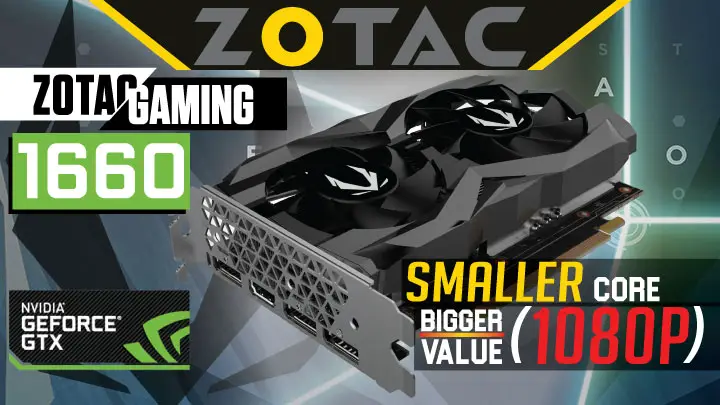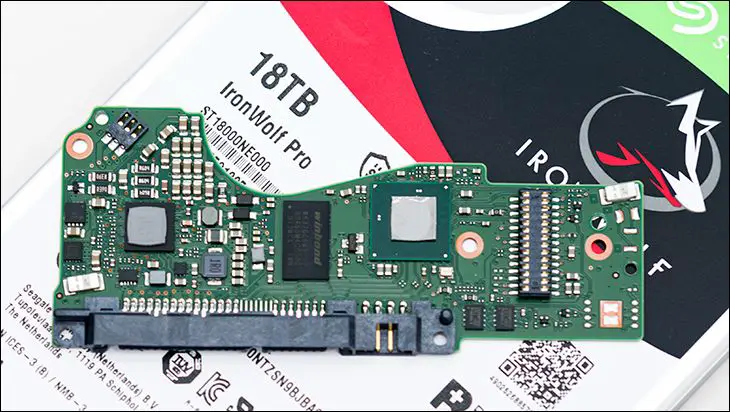Before we being our examination of the Zotac Gaming GTX 1660 6GB, one thing does need to be explained. That obviously what is a GeForce GTX 1600 series core. In simplistic terms it is a blend of the last generation 10-series with all the low-level tweaks that went into the ‘Turning’ RTX 20-series… sans ray tracing and DLSS and all that made the RTX the RTX series. With the GTX 1660, what NIVIDA has done is remove the Tensor and Ray Tracing cores and just left the CUDA core portion (and memory controller, etc.) of their RTX-20 series. In addition to these low-level CUDA centric improvements that NVIDIA has thought up, the GTX 1600 series is also fabb’ed on a 12nm process instead of the 16nm that the 10-series was fabb’ed on. In other words, for all those wondering what a RTX card would be with only CUDA cores… the 1600 series is the answer. With one caveat… they did slash the number of CUDA cores. In fact, even against the ‘small’ RTX 2060 core the new TU116 / GTX 1660 only has 2/3’rds the number of CUDA cores – so it is only a partial at best ‘answer’ to that question.
Here is exactly what we mean. This is the RTX 2060 Core (which obviously has a lot more CUDA cores):
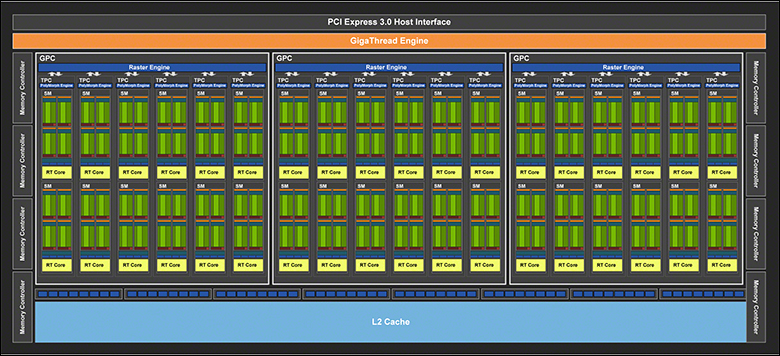
Here is the GTX 1660Ti Core:
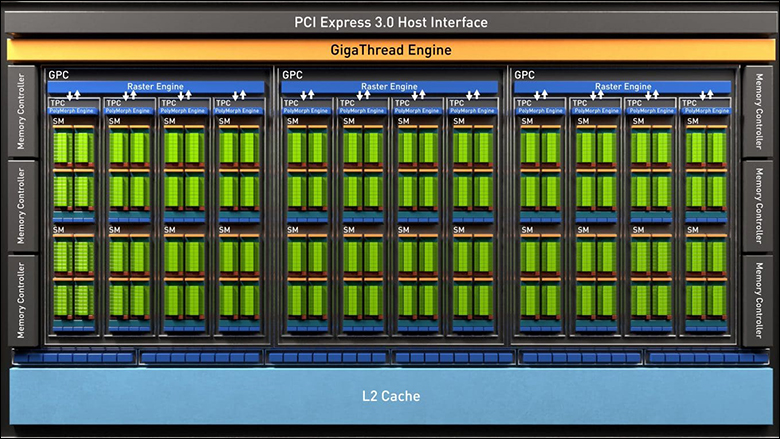
Of course, as they only needed the CUDA cores this allowed NVIDIA to make the size of the RTX 1660 core much, much smaller… and much more ‘fuel efficient’. This new creation was dubbed the TU116 core. In the first release – aka the NVIDIA GeForce GTX 1660Ti – the TU116 consisted of 24 SMMs, with a total of 48 ROPS, 96 Texture Units… all on a 192-bit wide memory bus.
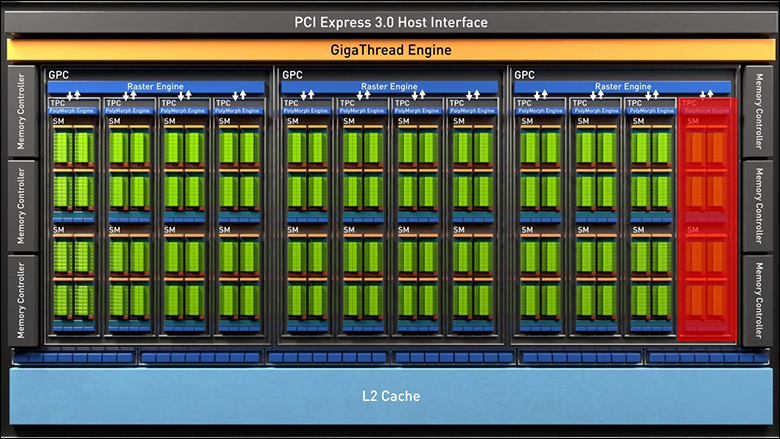
For the slightly lower non-TI GTX 1660 edition, that we are reviewing today, NVIDIA has simply cut off two of the SMMs. Leaving a total of 1408 Cuda Cores, 88 Texture Units, etc… on a 192-bit wide bus. Of course, they did also make one ‘minor’ tweak to help differentiate one 1660 core from the other.
Specifically, while both 1660 and 1660Ti come with 6GB of memory… NVIDA spec’ed out 12Ghz (effective) GDDR6 memory for the Ti edition, but only 8Ghz (effective) GDDR5 for the non-Ti GTX 1660. On the non-Ti version this does have a tendency to bottleneck the memory bus – as it is a reduction in bandwidth from 288GBs to 192GBs. Obviously these two models are focused at different demographics. In simplistic terms people can consider the GeForce GTX 1660Ti the GTX 1060 6GB’s replacement, while this card is the GTX 1060 3GB successor.
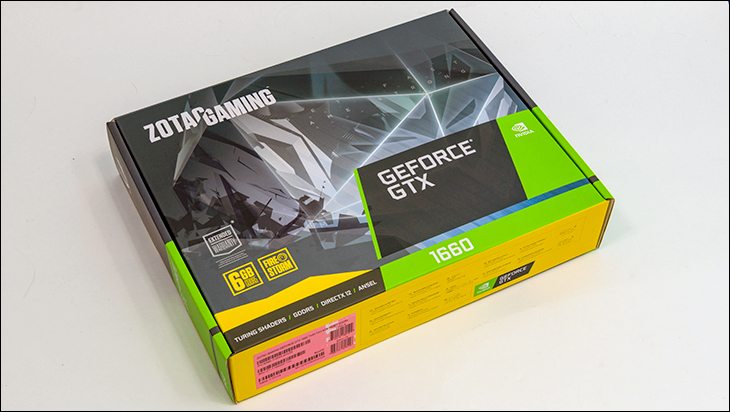
With that cleared up let’s take a look at the Zotac GAMING GeForce GTX 1660. The shipping container is not only rather attractive, in a conservative… bordering on bland aesthetics, it also hints at exactly what Zotac has envisioned for their take on the typical GeForce GTX 1660 series. Put simply this box is tiny. We have purchased earbuds (albeit uber high-end memory) that came in boxes bigger than this shipping containers!
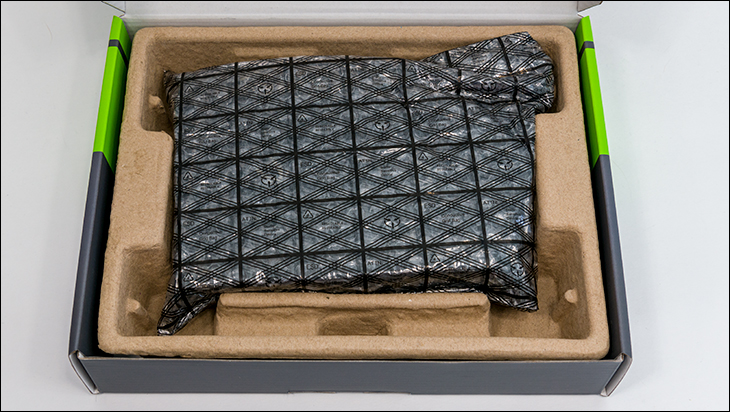
Where our sample may or may not be the finalized retail version, we are unsure if the use of cardboard for the internal protection is what you will find. In some way’s cardboard is a good choice. It is light, compact, and can protect fairly well against scrapes, scratches, and blunt force trauma. On the other hand, it is only ‘adequate’ at the last… and a noticeable step down from previous Zotac RTX cards that used foam. To be honest, as this is such a value orientated card it would not surprise us if it does use cardboard and not foam in the final version. This is one way to help keep build costs down.
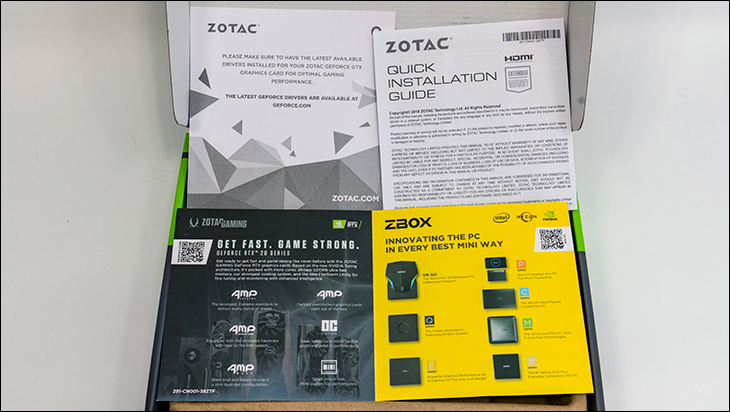
The accessories are also going to be a mixed-bag if this is the example of retail version. Inside the box you will get an installation pamphlet, a few brochures… and that is it. No dual 6-pin to 8-pin adapter, no DVD disc with drivers… nothing. We personally are ambivalent over not including a driver disc as we never, ever have used one. We have always downloaded the latest version as the disc is always out of date. Most likely our sample is simply missing the 8-pin adapter and you will indeed get one. If not… they are not that expensive, but it is something to research further before purchasing.
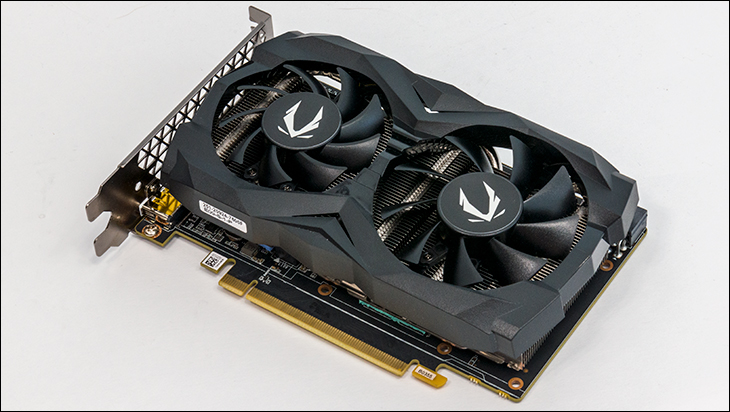
Even on just a quick glance you can precisely ‘get’ what Zotac envisioned for their Zotac GAMING GeForce GTX 1660 series. To be precise they wanted to create a card that was both compact and silent. The first is rather easy to explain. They somehow managed to created a true Full Height Half Length video card that does not suck eggs. As any small form factor enthusiast knows there are two holy grails of video cards. The first is HHHL or Half Height Half length, the other is FHHL or Full Height Half Length. Half-height (aka ‘HH’ what most SSD AICs use) are 79.2mm / 3.118 inches tall, while full-height (‘FH’) are 120mm / 4.7 inches tall. Half-length (aka ‘HL’… which is what most SSD Add In Card models use) are 175.26mm / 6.9 inches long, while full-length (‘FL’) are 312mm / 12.283 inches in length.
This card’s official measurements are 173.4mm by 115.5mm by 2-slot (35.3mm). So it actually is a smidgen under the FHHL standard requirements! Forget the Zotac Mini 10-series… this bad boy is even mini’er. So much so it could be called the ‘super mini’ and it would be a fitting name. Arguably even better than being part of the ‘Gaming’ series.
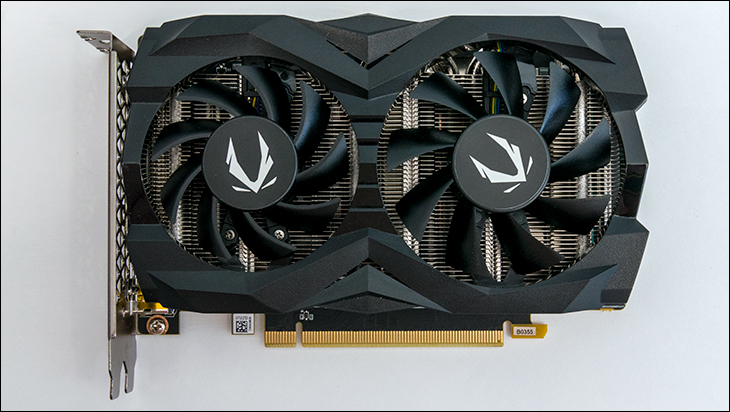
In either case, while this is indeed a ‘mini’ sized card, Zotac did not go the easy route and simply stick one fan on the card. Instead they have managed to fit two. When it comes to cooling small video cards two is almost always better than one. In this case it is better than one. Of course, to fit two fans on such a small form-factor Zotac to did have to think outside the box. To be precise they had to make the rear-most fan (the one nearest the I/O ports) a 70mm fan, and the forward-most a 80mm fan.
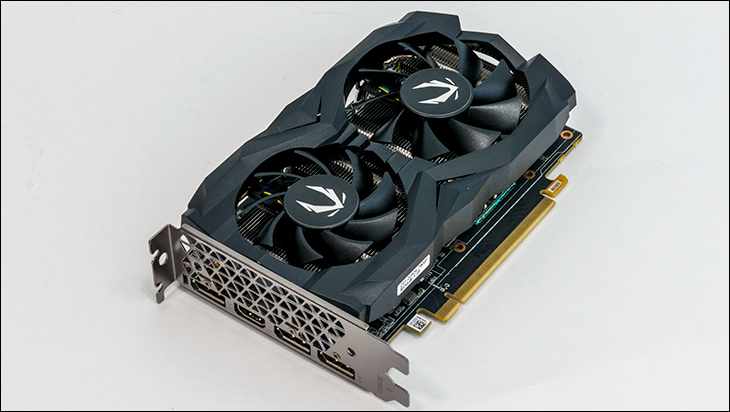
This may sound… odd, and it is, but the reality is these two small fans can move more air than a single 90, 92 or even 100mm fan could and do so and at lower RPMs. Remember the FHHL is extremely limited in not only in length but also in height. There simply is no way to get much bigger than this without going over spec – and why the Zotac Mini we reviewed last year only came close to this critical specification.
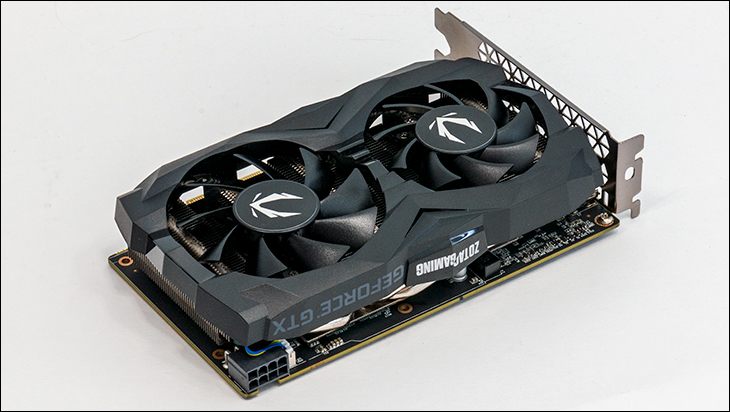
Why should you care if it meets this specification? Simply put it means you do not have to worry about installation issues. This is as close to a ‘plug and play’ card you can get that requires an external power connection. Interestingly enough this 110watt max TDP card makes use of an 8-pin power connector and not a 6-pin that one would expect. Typically, smaller power draw cards pull some power from the PCIe port itself and the rest from the PCIe cable. This card has access to 150-watts via the 8-pin cable, so it will only pull a mere trickle from the PCIe slot. This may or may not matter to you, but if you plan on making a mega-mining rig with these little cards (like a lot of people did with the GeForce GTX 1060 6GB series before it)… you really do not have to worry about how you power the PCIe adapter board. We still would recommend MOLEX or PCIe… but this is as about as ‘safe’ a card as you can get and we doubt even SATA connectors will cause a problem.
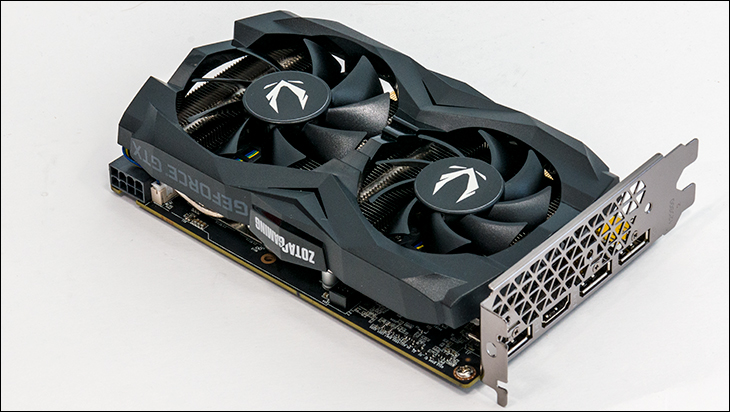
The reason that the Zotac GAMING GeForce GTX 1660 uses an 8-pin connector is simple. It is for all intents and purposes their Zotac GAMING GeForce GTX 1660Ti card with just the RAM and GPU itself swapped out. In basic terms this means a relatively large (by FHHL standards) heatsink that makes use of three heat pipes instead of the typical two (at best… and we have often seen zero heat pipe FHHL cards in the past). This is the other half of the answer on how Zotac were able to make a 60-class card so gosh darn silent and so gosh darn small. This heatsink really is a cut above average. In testing the absolute highest we could get temperatures was in the mid 70s… and that was with the stock fan profile! Even when running flat out they are not what we would call loud, and under typical scenarios we honestly doubt you will ever hear them. The only minor nitpick is they always spin – so there is always some noise from them. Yes, unlike some higher-end Zotac cards, there is no ‘Freeze’ or ‘Zero RPM’ option. They always are moving air. To be honest… that is not really a bad thing when dealing with FHHL form-factor cards.
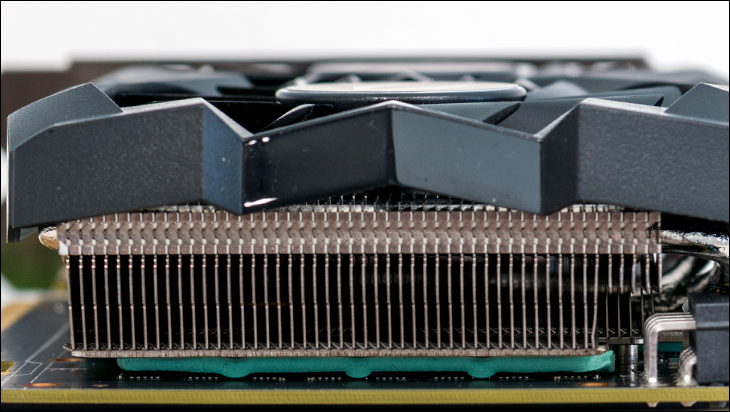
Make no mistake this low noise fan profile still gets the job done. In fact, worries over say the RAM overheating are also moot. This is because for this ‘GTX’ generation Zotac is including heat pads on all the various other components of the PCB. Color us impressed. Also is impressive it while this ‘base model’ version does not come with a backplate, nor wrap-around cooling fins, the top fascia does not fully enclose the heatsink. Instead there is plenty of room for exhaust air to escape. This helps reduce static pressure, and in turn also helps to keep noise levels down.
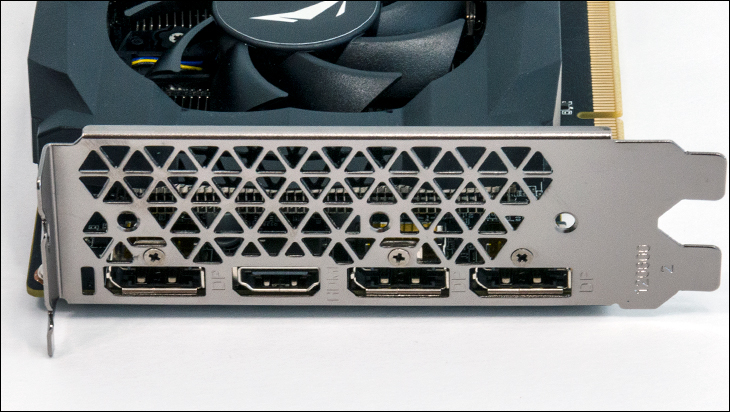
Further helping to reduce static pressure the rear I/O ports of this card only take up one row – leaving the top row for ventilation slots. The downside to this is the I/O options are tad limited. They are however bog-standard for GTX 1660s. In grand total you get one HDMI 2.0 port, and three DP 1.4 ports. Thankfully they are all full-sized versions… and not the “less than optimal” minis which every knows ‘n’ loathes.
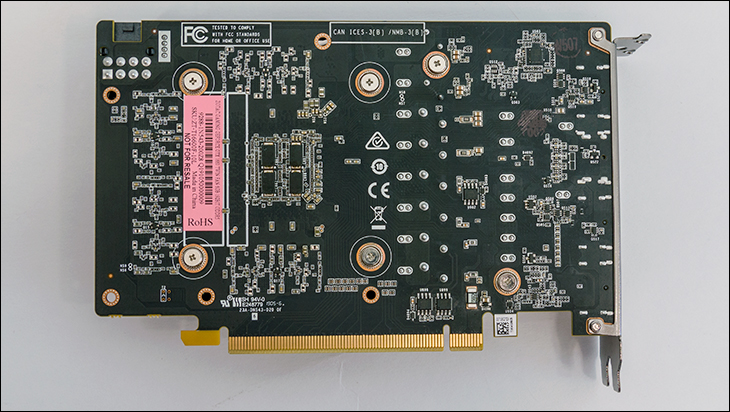
The only minor issues we have with this card are on the aesthetics front. Simply stated some people will be turned off by the copious amounts of plastic -as the entire top fascia is plastic – and its… monochromatic color pallet. Much like as Henry Ford once said “you can get a (Zotac GAMING GeForce GTX 1660) in any color you want. As long as it is black”. Mix in the fact that this card does not light up like a Christmas tree, and some will find it a bit too under-stated in its appearance. Personally, we find it refreshing. We are of the firm option that companies should not waste time, resources, and money on LEDs and goo-gaws when that money could be more wisely spent on making the video card itself better. You may feel differently… but Zotac obviously agrees with us.
Overall this ultra-small card is impressive. It really is amazing how much 1080P performance you can get these days for such little cash and little space. Of course, the flip side of this is that this is a 1080P card and as we will show in the following pages… once you go above 1080P resolution the performance does start to plummet. This should come as no surprise as it is a $200 class card… and slow noise and compact form-factor cannot make up for the lack of CUDA cores (or slow GDDR5 memory).
